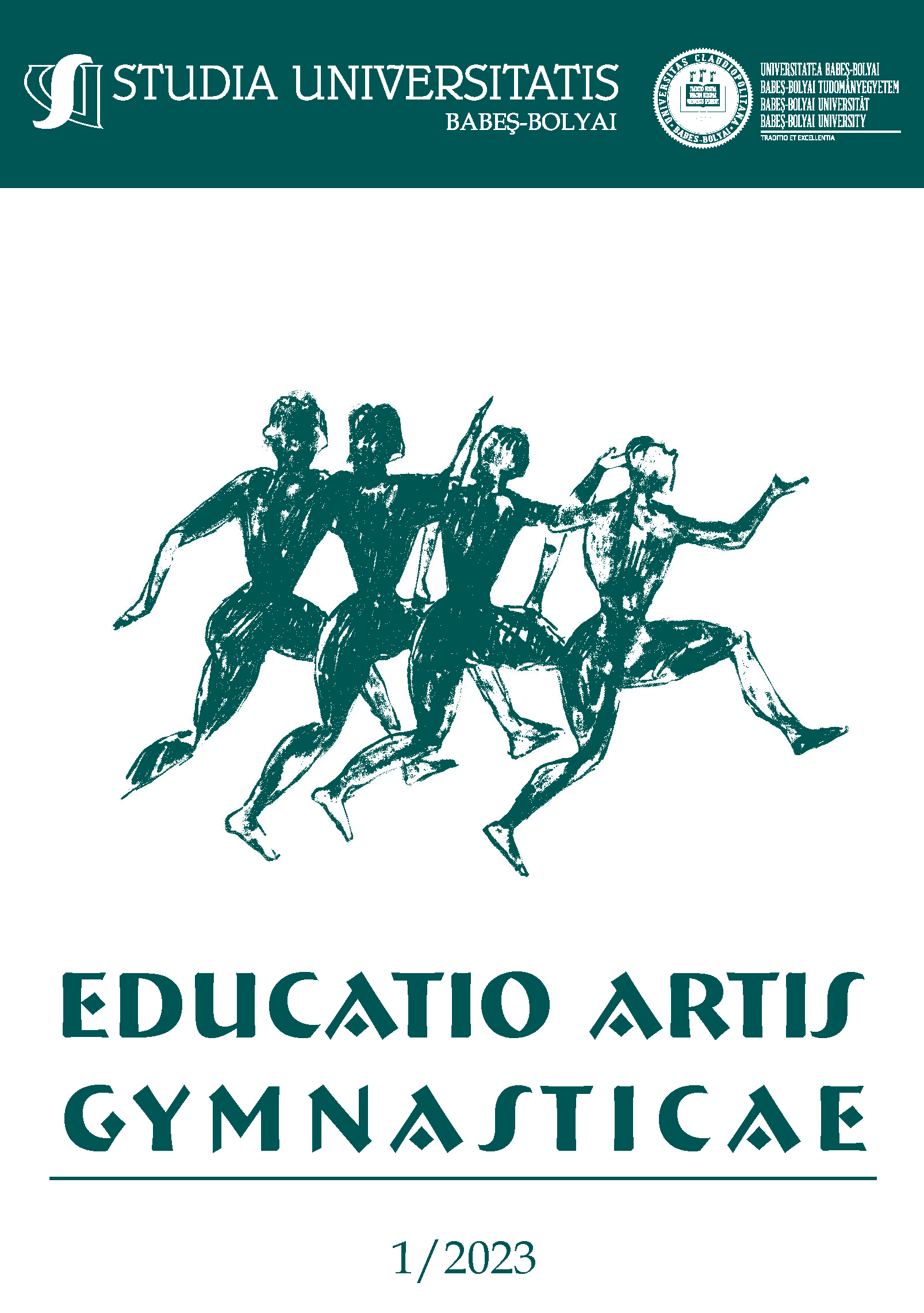QUANTITATIVE AND QUALITATIVE CHARACTERISTICS OF MOTIVATION IN THE FIELD OF PHYSICAL EDUCATION AND SPORTS
DOI:
https://doi.org/10.24193/subbeag.68(1).01Keywords:
Motivation, qualitative, quantitative, students, physical educationAbstract
Introduction: Learning the quantitative and qualitative characteristics of motivation provides important information for understanding the behavior in physical education and sports in young people. Sage (1977) describes motivation as one’s effort towards certain activities and its intensity. Motivation is deeply rooted in the individual based on Vallerand’s (1987) hierarchical model, and its type (intrinsic versus extrinsic motivation) can change during the activity, as well as sometimes remains hidden. Method: Four hundred and nine students took part in our research, whose average age was 15.0 years. In addition to the questionnaire based on the Theory of Planned Behavior (TPB), research participants filled out the Behavior Regulation in Exercise Questionnaire (BREQ-2) regarding to the Self-Determination Theory (SDT). Respondents also reported the support they received from their social environment for physical activity, as well as what their future intentions were and how their past behavior and current behavior have developed. Data analysis was performed by employing IBM SPSS v. 25 and AMOS v. 24 software packages. Results and conclusions: In our study social support influenced young people’s intention to perform physical activity as a current behavior. According to the Trans-Contextual Model (TCM) results revealed how autonomous motivation transfers across contexts (e.g., from school/education to free living) and therefore explained how leisure time behavior is reinforced. Our data confirmed the strongest positive relationship between students’ past behavior and current behavior followed by a moderate relationship in students’ past behavior and intention. Thus, the relationship between past behavior and current behavior was also moderate. Results have implications beyond physical activity, and can help understanding of why young people make a range of choices related to health. Results can also aid the development of educational materials and practical methods to motivate young people to choose a healthy, physically active lifestyle. In conclusion, from a school context to leisure time can help educational and health practitioners to understand what influences health-related physical activity behaviors in young people. Physical education classes are supposed to instill behaviors and attitudes that promote physical activity in free-time and promote healthy lifestyle. Nevertheless, according to our findings, the expected function of physical education in schools fails to meet the criteria that lead to developing self-determined or autonomous motivation to young students’ leisure time intention, and especially physical activity.
Received 2022 October 07; Revised 2022 November 21; Accepted 2022 December 05; Available online 2023 May 30; Available print 2023 June 30.
References
Biddle, S. J. H., Soós, I. & Chatzisarantis, N., (1999). Predicting physical activity intentions using a goal perspectives approach: A study of Hungarian youth. Scandinavian Journal of Medicine & Science in Sports, 9(6), 353–357. https://doi.org/10.1111/j.1600-0838.1999.tb00256.x
Ford, M. E. (1992). Motivating humans. Goals, emotions, and personal agency beliefs. Sage Publications. https://doi.org/10.4135/9781483325361
Franken, R. E. (1998). Human motivation. Brooks/Cole Publishing Company.
Hamar, P. és Mocsai, L. (2019). A sportpedagógia szakmódszertani kérdései. Testnevelési Egyetem Kiadó, Regnum Press.
Nicholls, J. G. (1984). Achievement motivation: Conceptions of ability, subjective experience, task choice, and performance. Psychological Review, 91(3), 328–346. https://doi.org/10.1037/0033-295X.91.3.328
Sage, G. (1977). Introduction to motor behavior: A neuropsychological approach (2nd ed.) Reading, MA: Addison-Wesley.
Soos, I., Dizmatsek, I., Ling, J., Ojelabi, A., Simonek, J., Boros-Balint, I., Szabo, P. Szabo, A. & Hamar, P. (2019). Perceived Autonomy Support and Motivation in Young People: A Comparative Investigation of Physical Education and Leisure-Time in Four Countries. Europe’s Journal of Psychology (EJOP), 15(3), 509–530. https://doi.org/10.5964/ejop.v15i3.1735
Vallerand, R. J. (1997). Toward a hierarchical model of intrinsic and extrinsic motivation. Advances in Experimental Social Psychology, 29, 271–360. https://doi.org/10.1016/S0065-2601(08)60019-2
Downloads
Published
How to Cite
Issue
Section
License
Copyright (c) 2023 Studia Universitatis Babeș-Bolyai Educatio Artis Gymnasticae

This work is licensed under a Creative Commons Attribution-NonCommercial-NoDerivatives 4.0 International License.






